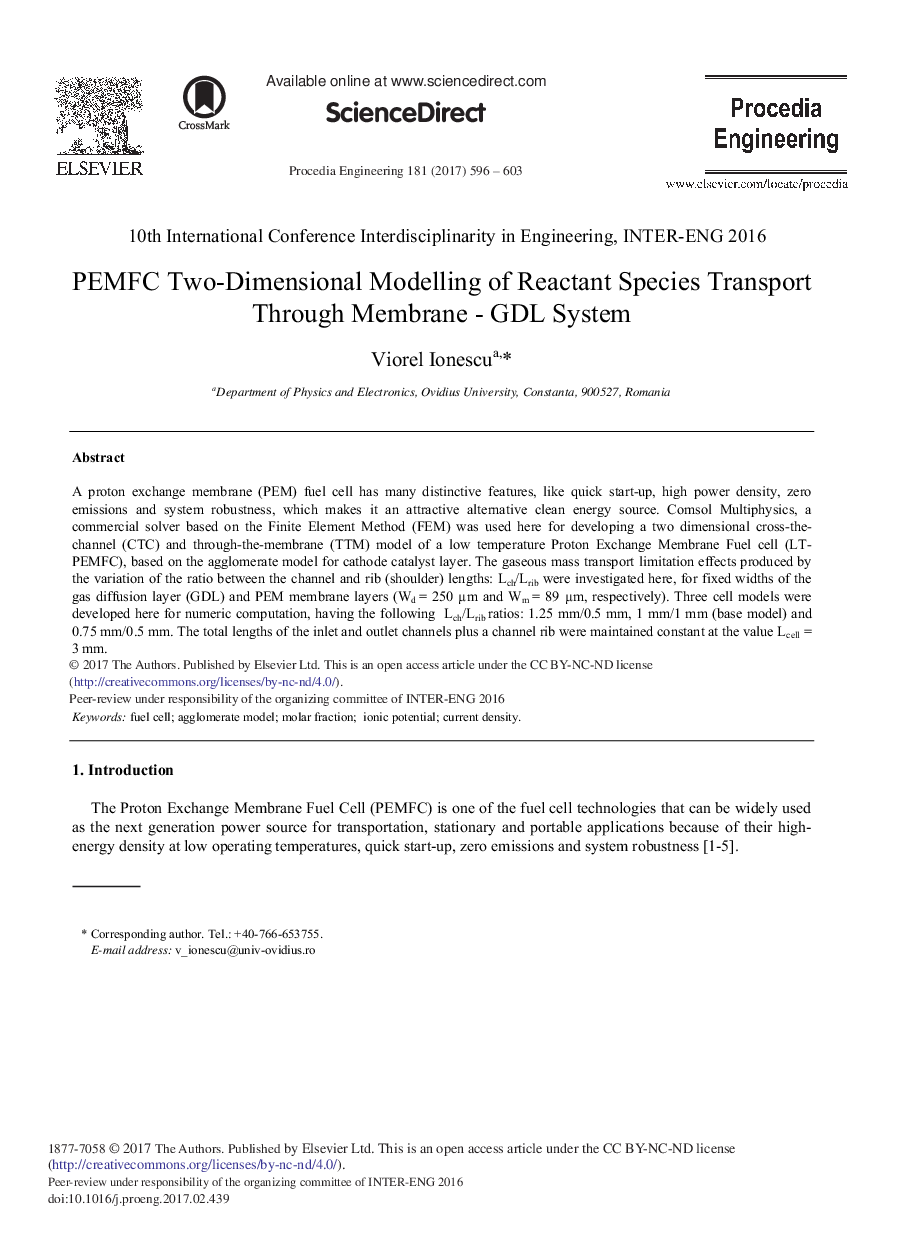| Article ID | Journal | Published Year | Pages | File Type |
|---|---|---|---|---|
| 5028886 | Procedia Engineering | 2017 | 8 Pages |
A proton exchange membrane (PEM) fuel cell has many distinctive features, like quick start-up, high power density, zero emissions and system robustness, which makes it an attractive alternative clean energy source. Comsol Multiphysics, a commercial solver based on the Finite Element Method (FEM) was used here for developing a two dimensional cross-thechannel (CTC) and through-the-membrane (TTM) model of a low temperature Proton Exchange Membrane Fuel cell (LTPEMFC), based on the agglomerate model for cathode catalyst layer. The gaseous mass transport limitation effects produced by the variation of the ratio between the channel and rib (shoulder) lengths: Lch/Lrib were investigated here, for fixed widths of the gas diffusion layer (GDL) and PEM membrane layers (Wd = 250 μm and Wm = 89 μm, respectively). Three cell models were developed here for numeric computation, having the following Lch/Lrib ratios: 1.25 mm/0.5 mm, 1 mm/1 mm (base model) and 0.75 mm/0.5 mm. The total lengths of the inlet and outlet channels plus a channel rib were maintained constant at the value Lcell =3 mm.
